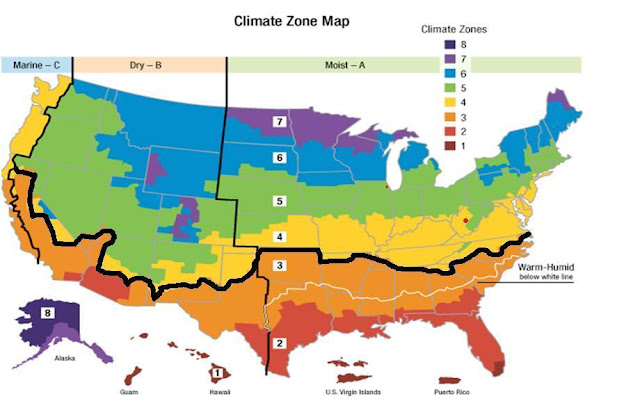White thermoplastic roof membranes are thought of by some as a step
forward in addressing global climate shift and as a tool to reduce energy
consumption. The government mandated its use in some places and everyone was forced to jump aboard without empirical data:
builders, designers, and manufactures alike. Here we are, short of twenty years
coming, and the most important thing that has changed is that we have become more educated in how this material performs.
Thanks to the U.S.
Department of Energy for providing their research - we now know, “when cool roofs are optional ... the
decision should be considered carefully, as cool roofs do not perform equally
well everywhere. Climate has the biggest impact on energy savings. Cool roofs
achieve the greatest cooling savings in hot climates (Climate Zones 1-3) but
can increase energy costs in colder climates due to reduced beneficial winter
time heat gains.” Tom Hutchinson of The Hutchinson Design Group in Chicago, IL
is a well-respected roof consultant who has worked with two international
committees tasked with defining roof sustainability.“It’s gotten to the point
out there where people think, ‘if a roof membrane is white, then it’s great,’”
Hutchinson says. “In the real world of roof design, that is definitely not the
case.”
The fact is that “cool” membrane color can be light if you
live in climate zones 1-3 or dark colored in zones 4-8. Dura-Ply Roofing in Addison, IL, is 25 minutes west of Chicago, in climate zone 5, where a
dark-colored roof membrane is preferred.


No comments:
Post a Comment